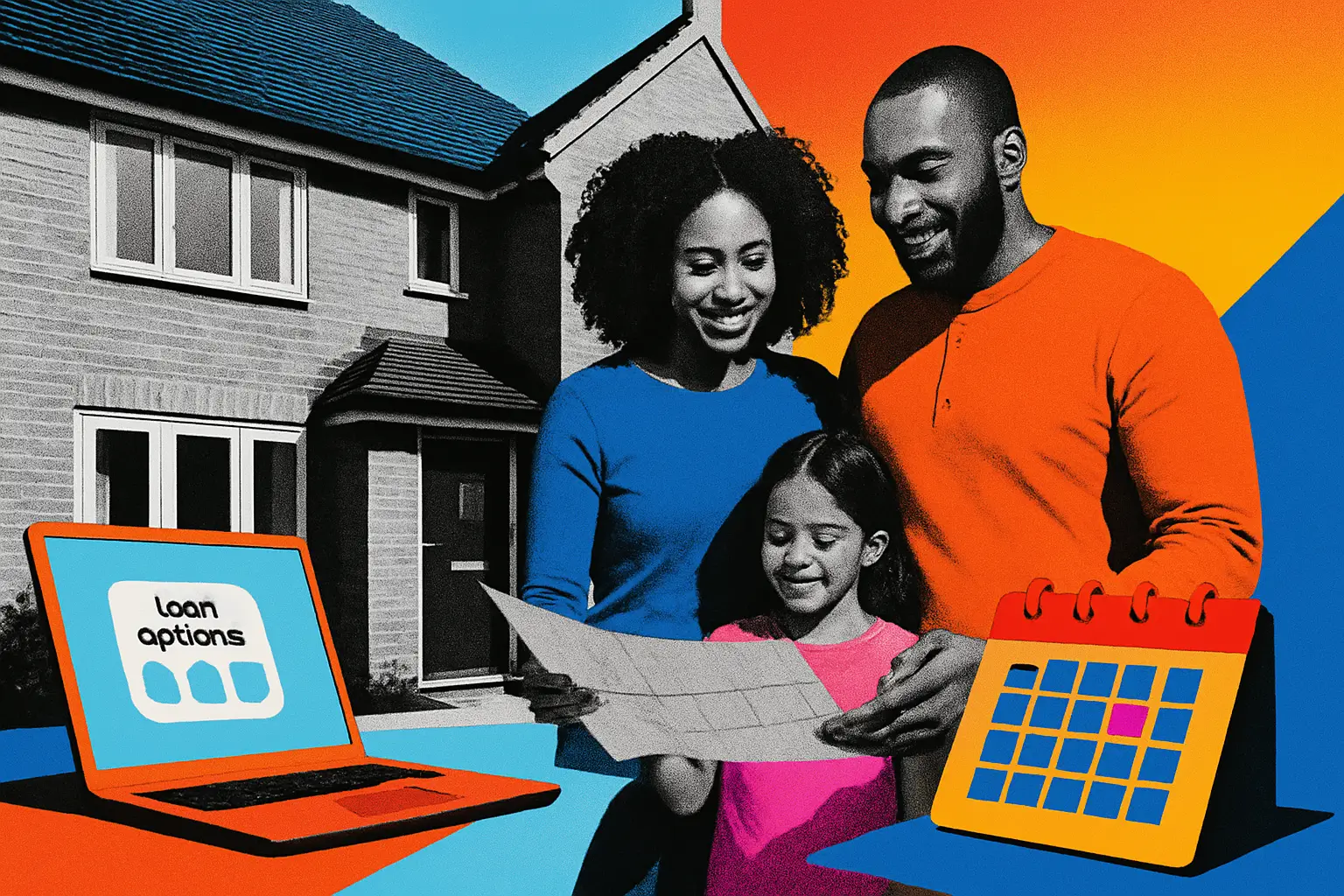Discover when a second charge loan can beat remortgaging, preserving low rates, avoiding ERCs, and releasing equity quickly while managing costs, risks, and eligibility in the UK market.
The smart route to releasing equity now
In a rising rate environment, the question many UK homeowners face is simple: how do you unlock property equity without surrendering a prized low mortgage rate or paying steep early repayment charges? For a growing number of borrowers, the answer is a second charge loan. It sits behind your main mortgage, secured against your property, and can be more efficient than remortgaging if timing, costs, or flexibility are critical.
Consider two common pain points. First, early repayment charges on fixed-rate mortgages can swallow thousands if you redeem before the end of the term. If your current deal is at 2 to 3 percent and has, say, a 3 to 5 percent ERC, remortgaging now could be disproportionately expensive. A second charge loan lets you leave the first mortgage intact, avoiding ERCs while accessing the equity you need. Second, speed. Remortgaging typically takes 6 to 12 weeks. Second charges are often completed within two to three weeks, which can be decisive for auction purchases, urgent renovations, or consolidating high-cost debts.
The attraction is not just about avoiding fees or moving quickly. Many borrowers are understandably reluctant to replace a historically low mortgage with a new one at 5 percent or more. By adding a second charge on top, you preserve that low first-charge rate while borrowing additional funds at a rate lower than most unsecured borrowing. Lenders also tend to offer higher loan-to-value on second charges than many remortgage options, sometimes up to 100 percent LTV depending on equity, affordability, and credit profile. That can be useful for larger projects that exceed typical remortgage caps.
Keep what is cheap. Add what you need.
There are trade-offs. Second charges usually have higher rates than first-charge remortgages, you will manage two payments, and the underwriting will still check affordability and valuation. Yet for borrowers with complex income or mild credit issues, the criteria can be more accommodating than a strict remortgage route. If your plan is to repay over a shorter horizon, taking a second charge on a 3 to 6 year term may also reduce total interest relative to refinancing your entire mortgage for decades.
Used thoughtfully, a second charge loan is a targeted tool. It helps you ring-fence a valuable mortgage deal, unlock capital promptly, and structure repayments to suit your cash flow. The key is to measure the all-in cost, not just the rate, and to be clear about your timeframe for repayment.
Who benefits most
If you are on a fixed-rate mortgage with notable early repayment charges and you need funds quickly, a second charge may suit you better than remortgaging. Homeowners with low legacy rates who want to keep them while funding renovations, business cash flow, or debt consolidation often prefer this route. It is also practical if your income is complex, you are self-employed, or your credit file has a few dents that make a mainstream remortgage difficult right now. Finally, those planning to repay within a shorter period can use a second charge to avoid dragging the cost over a full mortgage term, keeping interest contained.
Key terms to know
- Second charge loan: A secured loan that ranks behind your existing mortgage, using your property as collateral without altering your main mortgage.
- Early repayment charge (ERC): A fee payable if you repay or switch your fixed-rate mortgage early, often a percentage of the outstanding balance.
- Loan-to-value (LTV): The loan amount as a percentage of your property value. Higher LTV can allow larger borrowing but may mean higher rates.
- Affordability assessment: Lender checks on income, outgoings, commitments, and credit to determine the sustainable loan size.
- Fixed vs variable rate: Second charges may be fixed for certainty or variable to potentially benefit from future rate changes.
- Term length: Second charges can be shorter than mortgages, for example 3 to 6 years, reducing total interest if repaid quickly.
- Charge priority: Your first mortgage is repaid first if the property is sold. The second charge lender is repaid afterwards.
Your routes to raising funds
- Second charge loan - Keep your current mortgage untouched, avoid ERCs, and add a new secured loan. Often faster to complete in 2 to 3 weeks and can offer higher LTV. Rates can be higher than remortgage but generally below unsecured options.
- Remortgage to a larger balance - Replace your existing mortgage with a new, bigger one. May secure a single blended rate and one payment, but risks losing a low existing rate and incurring ERCs. Completion can take 6 to 12 weeks.
- Further advance from your current lender - Borrow more from your existing lender under your current mortgage. May be cheaper than a second charge, but availability, speed, and criteria vary. Can still impact your overall mortgage deal.
- Unsecured borrowing - Personal loans or credit cards. Fast and flexible but typically higher rates and lower limits. Usually best for smaller sums with short repayment horizons.
Pounds and pence - weighing it up
| Factor | Likely Cost/Impact | Returns/Benefits | Risks/Considerations |
|---|---|---|---|
| Early repayment charges | Avoided with second charge | Preserve current mortgage terms | ERCs apply if you remortgage early |
| Interest rate | Second charge typically higher | Lower than many unsecured loans | Higher than many first-charge remortgages |
| Speed to funds | 2-3 weeks typical | Seize time-sensitive opportunities | Valuation or legal delays possible |
| LTV available | Up to 100 percent in cases | Access more equity for projects | Higher LTV may raise pricing |
| Term length | 3-30 years, often shorter | Potentially lower total interest | Short terms mean higher monthly payments |
Can you qualify
Eligibility hinges on three pillars: equity, affordability, and credit. Lenders will instruct a valuation or use an AVM to confirm your property value and calculate available equity after your first mortgage. They will review your income, committed outgoings, and credit conduct to judge what monthly payment is sustainable. Having a low-rate first mortgage is not a barrier, and it is often the reason a second charge is sensible. Adverse credit does not automatically disqualify you; some lenders accept recent blips or complex income such as self-employed dividends or multiple sources. You will need to be a homeowner in England, Wales, or Scotland, with consent from your first-charge lender where required. Leasehold or non-standard properties may be considered, though pricing can vary. Finally, the purpose of funds matters for underwriting, but second charges are generally more flexible than remortgages.
From enquiry to funds - the flow
- Share goals, property details, and budget
- Soft checks and indicative borrowing range
- Property valuation and document collection
- Lender underwrites income and credit
- Legal checks and first-lender consent
- Final offer issued for your approval
- Funds released to your bank account
Advantages and trade-offs
| Pros | Cons |
|---|---|
| Avoid ERCs and keep low-rate mortgage | Typically higher rate than remortgaging |
| Faster completion in 2-3 weeks | Two loans to manage each month |
| Higher LTV access for bigger projects | Fees and legal costs still apply |
| Flexible purposes beyond property use | Property at risk if repayments missed |
| Shorter terms can cut total interest | Variable rates can increase costs |
Read this before you commit
Look beyond the headline APR and compare the overall cost of credit, including product fees, valuation, legal work, and broker advice charges. Map the monthly payment against your cash flow and test rate rises if you are on a variable product. If consolidation is your goal, close old credit lines to avoid rebalancing debt at higher rates. Check any future plans to remortgage or move home, as the second charge will need to be settled or ported. Ensure the borrowing purpose aligns with the loan term so you are not paying for years after the benefit has faded.
Sensible alternatives to consider
- Further advance with your existing lender - Potentially competitive pricing with a single payment if available.
- Offset mortgage switch - Use savings balances to reduce interest while keeping flexibility.
- Unsecured loan for smaller sums - Quick access for minor renovations or short-term needs.
- Bridging finance for auctions - Short-term funding to complete a purchase, then refinance.
Common questions, answered
Q: Will a second charge affect my credit score? A: The lender will run credit checks. A new account and hard search may marginally impact your score, but good payment conduct typically supports it over time.
Q: Can I overpay a second charge loan without penalties? A: Many products permit overpayments, sometimes up to a set percentage annually. Always check the specific overpayment rules before committing.
Q: How do fees compare to remortgaging? A: You usually avoid ERCs, but there may be arrangement, valuation, legal, and broker fees. Compare total cost, not just the rate.
Q: What if my income is complex or I am self-employed? A: Second charges often cater to complex income with flexible underwriting, including directors, contractors, and multiple income sources.
Q: Are second charges available across the UK? A: Yes, with availability in England, Wales, and Scotland. Terms and legal processes can vary slightly by jurisdiction.
Q: How fast can I get funds? A: Many cases complete in two to three weeks, which is typically faster than a full remortgage at 6 to 12 weeks.
Q: What LTV could I achieve? A: Some lenders allow higher LTV than remortgages, sometimes up to 100 percent subject to affordability and valuation.
What to do now
If speed, ERCs, or a valuable low mortgage rate are your key constraints, a second charge may be the most efficient route. Gather your documents, clarify your budget and purpose, and request personalised illustrations. Ask for a side-by-side comparison that shows total cost over your expected timeframe, including fees and any early repayment options.
Important information
This guide provides general information only and is not personal advice. Secured loans place your property at risk if you do not keep up repayments. Always seek regulated advice and compare products before committing.
Get smarter with your money
Join thousands of Australians who are taking control of their financial future

FAQs
Common questions about managing your personal finances
Begin by tracking every expense for one month. Use an app or spreadsheet. No judgment. Just observe your spending patterns.
Cancel unused subscriptions. Cook at home. Compare utility providers. Small changes add up quickly.
Aim for 20% of your income. Start smaller if needed. Consistency matters more than the amount.
Choose reputable apps with strong security. Read reviews. Check privacy policies. Protect your financial data.
Pay bills on time. Keep credit card balances low. Check your credit report annually. Be patient.
Still have questions?
Our team is ready to help you navigate your financial journey
More financial insights
Explore our latest articles on personal finance and money management




